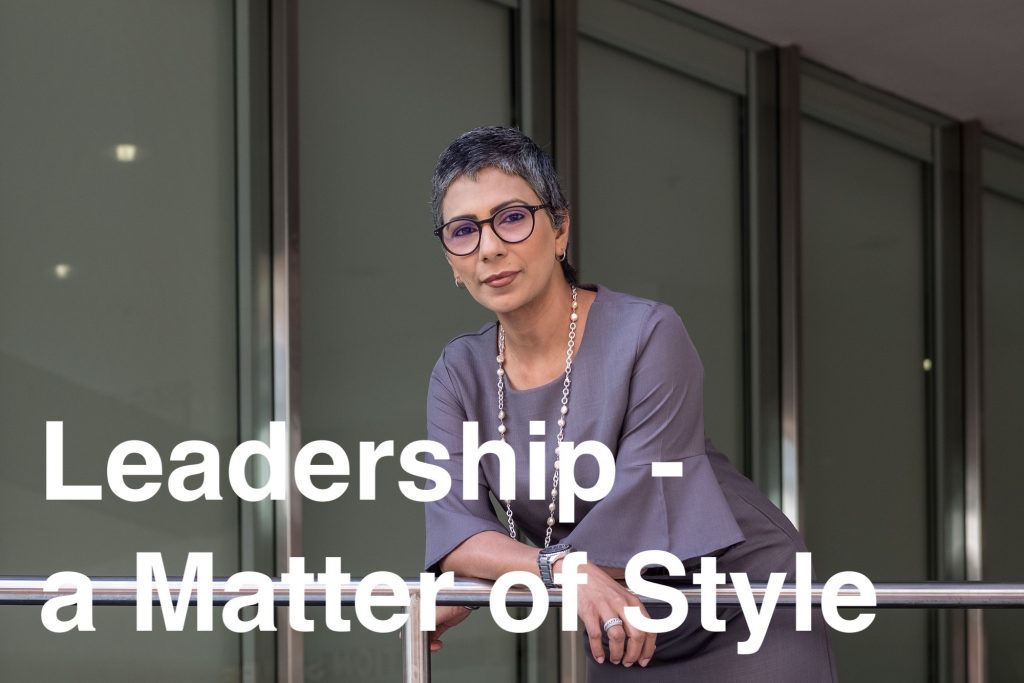
by Greg Burke, FAIA, NCARB
Leadership style can take on many different facets. As in architecture, leadership style is a manner of doing something. Style also is a distinctive appearance typically relating to a way in which something is designed. In my previous articles, I put forth the idea that leaders can be both made and rise from learned experience. If we are to see leadership styles, what gives the style a distinctive appearance? Are some styles better than others?
I will let the reader make that determination. The styles discussed here are emblematic of many larger professional service firms, of which architecture can be a constituent part.
Directive Leadership
Directive leadership is a style whereby a single leader is a controller over their colleagues and subordinates. Euphemistically this type of leadership might be better described as dictatorial leadership.
In today’s business atmosphere where empathy is a trait that is highly desirable of both the leader and from the subordinates this type of leadership takes on a vision that may be hard to work under. The leader in this style has a very clear vision of what they want to accomplish. No questions asked. This type of leadership defines the direction while the subordinate carries out the vision. The leader usually has a low threshold for failure to make the vision happen and sometimes a quick temper.
Two clear examples of this leadership style would be Elon Musk and Steve Jobs. Both have visions that require their colleagues and subordinates to carry out the vision – no exceptions. The atmosphere created with this type of leadership usually has an outcome of the leader being perfectly happy with the vision and direction he creates and the employee feeling as if they are robots, controlled by the master. The type of employee that may survive for a long period of time in this atmosphere is usually one who has limited ambition as a leader and is content with being a part of a team that is a winner.
Productive Tension Leadership
Where there is more than one leader, two or more leaders may be identified with an effective working relationship where the collaborators have two different roles. Many times there may be friction between the collaborators that pushes the other(s) to succeed in the vision of the entity. In architecture you might see this type of leadership whereby there is a senior or managing partner who has less senior or associate partners who carry out the firm’s vision. Sometimes the tension created between these roles are not very comfortable – it might even be perceived as adversarial. In many cases the best results come from these types of relationships. The style type can be termed productive tension leadership.
Inwardly, this style is combative and maybe somewhat uncomfortable. The principals of the firm can push each other’s buttons in getting the desired results. This tension does not have to be viewed as a negative, but a challenge to push the others to a level they may not have risen to by themselves. It’s almost like a second set of eyes assisting in your success.
Vigorous debate has to be supported and buffered by a sufficient amount of trust between the parties, that as quoted from The Godfather state “…it’s just business, not personal.” You need a bit of tough skin for this type of relationship, because there will usually be a single strong leader who is reliant for the others to execute the vision.
Decisions are made through tough debate, mutual exploration, and the ability to have the working relationship that drives success. Without the challenge of one principal to the other, group think happens. George Helmuth of HOK was often quoted that if he had two partners that agreed with everything he proposed, he did not need those partners.
Outwardly, the principals must provide a unified face to the colleagues who will help support the vision and provide the necessary avenue for success. What the principals embody is a leadership group that has a mutual trust and a high degree of honesty with each other. This type of leadership obviously is not built overnight – neither was Rome. Time is necessary to develop the necessary trust that is outwardly project to the team.
It’s often very easy to see in some architectural firms where this system is succeeding. You can walk in the door and feel the esprit de corps. Employees tend to stick around for a while – something that isn’t always common in our profession – provided they have a feeling when walking out the door that their contribution was appreciated. Remember, appreciation is one of the best traits of a leader.
Inertia Leadership
A combination of the two previous types often describes a large organization with many highly competent people with the best of intentions. These firms often act like a large ship, unable to turn on a dime, “…because that’s the way we always do it.” Change is not a bad word, it just takes time and is usually somewhat slow and painful.
Firms like this employee inertia leadership. There are often tight time frames and an aggressive mandate for completing tasks with a measurable success rate. Systems are usually built into the process to ensure that things go well. Thus often there is frustration and there are those inclined to blame the leader if they fall short. It is necessary to understand that the inertia is much more structural and inherent in “the way we always did it.” Changing this style of leadership will take more of an effort than changing just one person, no matter how much that person controls the system.
There is often an attempt to change the person(s) who are the leaders here. What really has to change is the culture, workflow and other aspects of how things get done. While not an easy task, it usually happens through attrition in large firms where the whole culture of the firm changes.
Conclusion
These three styles of leadership can be seen in almost every architectural firm across the world regardless of size. These are comprehensive styles that reduce the possibilities to the three most prominent. As we stated in the earlier articles, the personal trait of the leader(s) has to be that which creates other leaders. Those who choose to be followers can be content in knowing that their role is appreciated.
How will your leadership style fit into one of these categories? Only you can answer that question. Choose what best works for you and your firm.
In the next article, I will explore leadership traits, both positive and negative. You will see that both sets can apply to the styles that are described above. In the meantime – give the above ideas some thought and leave a comment if you have any ideas to add to the conversation.

gjburke@burkearchitects.com
Greg Burke, FAIA is president of Gregory John Burke | ARCHITECT, PA located in St. Augustine, Florida. He was elevated to the AIA College of Fellows in 2018 for his more than four decades of professional leadership, mentoring and governmental advocacy.

Greg, I agree, “it’s a matter of style”. Every firm is unique and it’s culture is as well. The leader of a firm will create the culture based on their style of leadership. Your article is certainly provocative and provides will ‘food for thought’, for many.
In my own small firm, which was a partnership, my partner and I each had a preferred ‘focus’ on the different aspects of the firm’s operations. Based on many years of prior experience my natural skill-set focused on in both leadership and management; whereas my partner was a very creative person and a talented designer.
We each complemented one another and that made for a harmonious partnership.
An excellent series of three articles that will provide a lot of things for young architects who aspire to have their own firm someday. Well done.